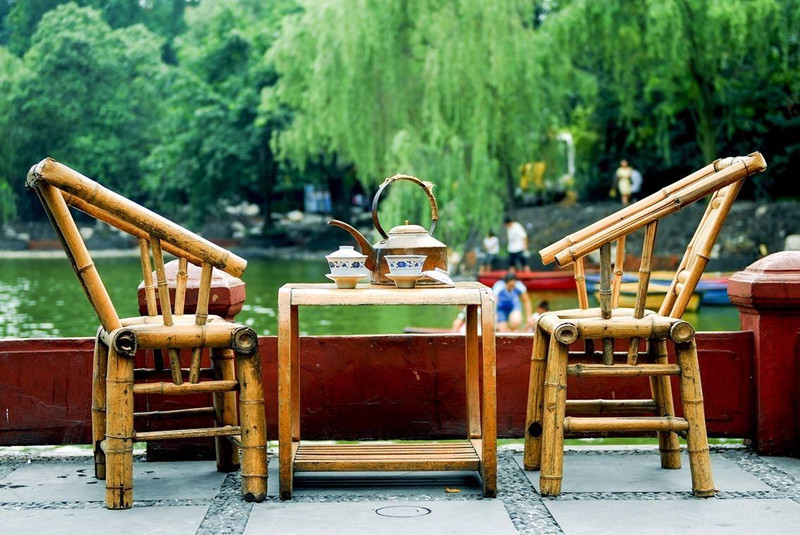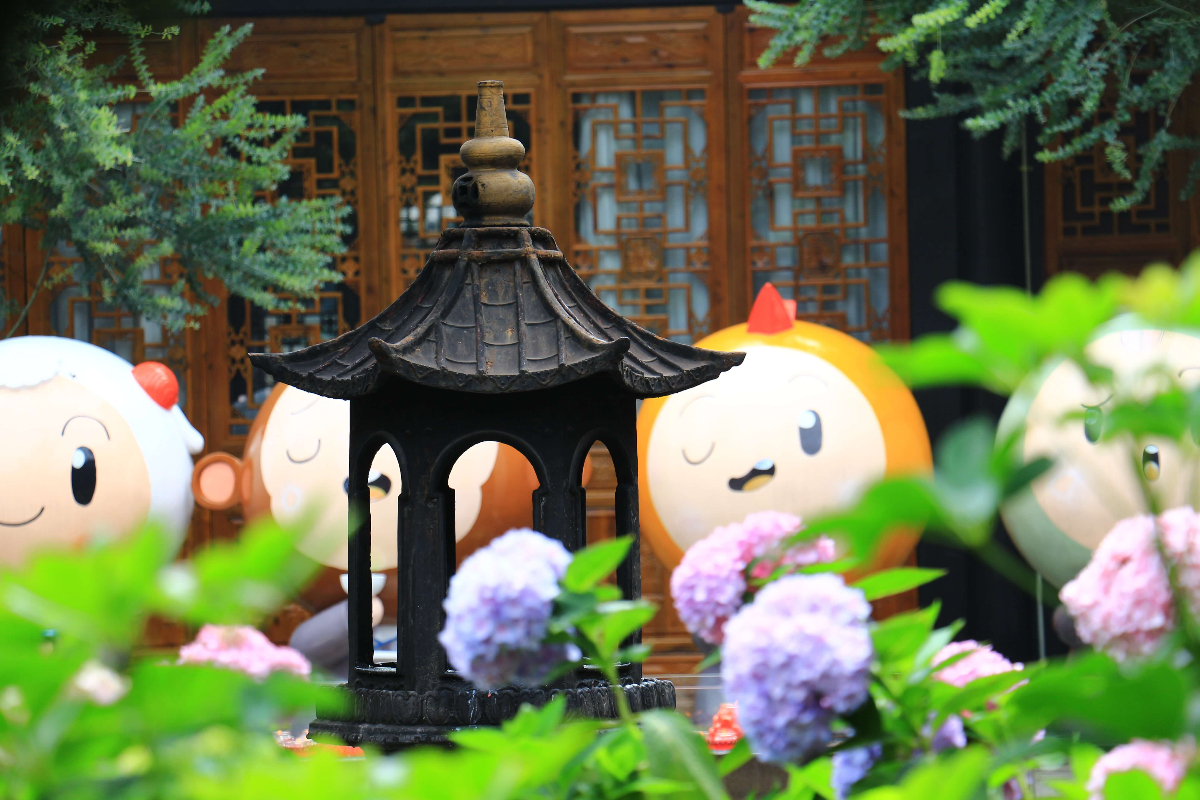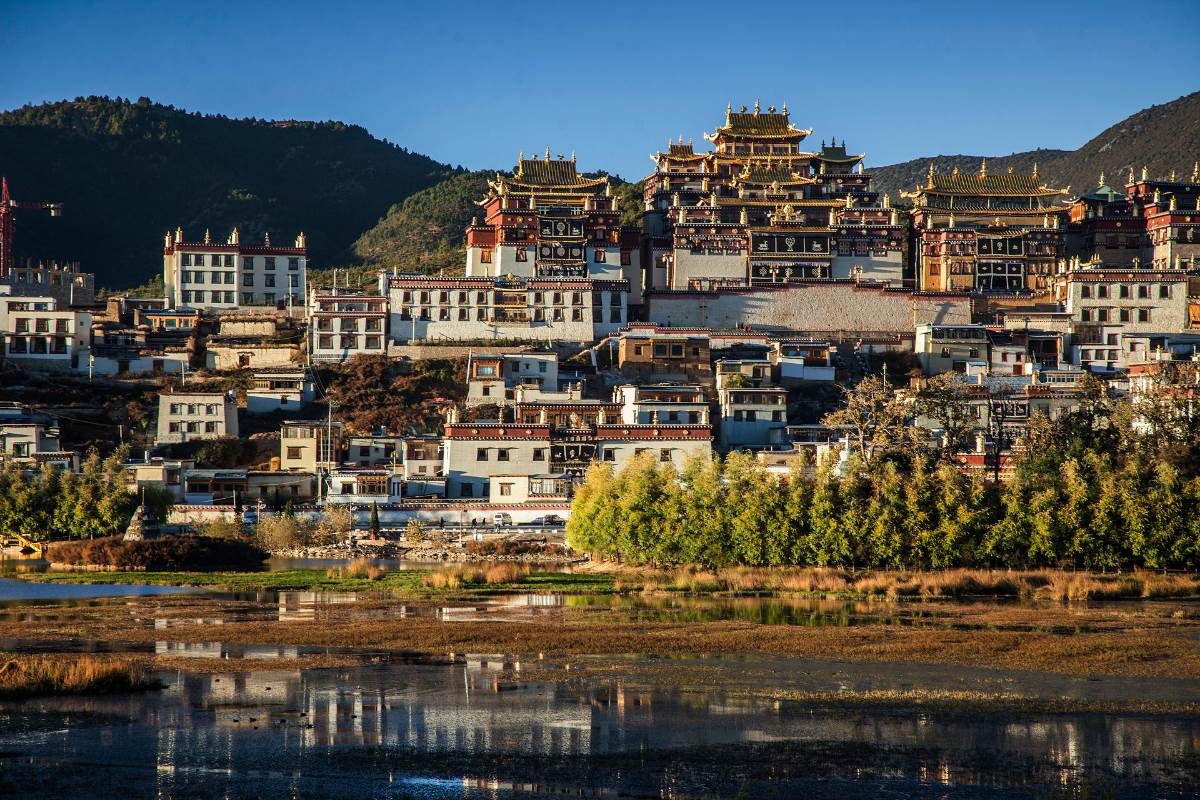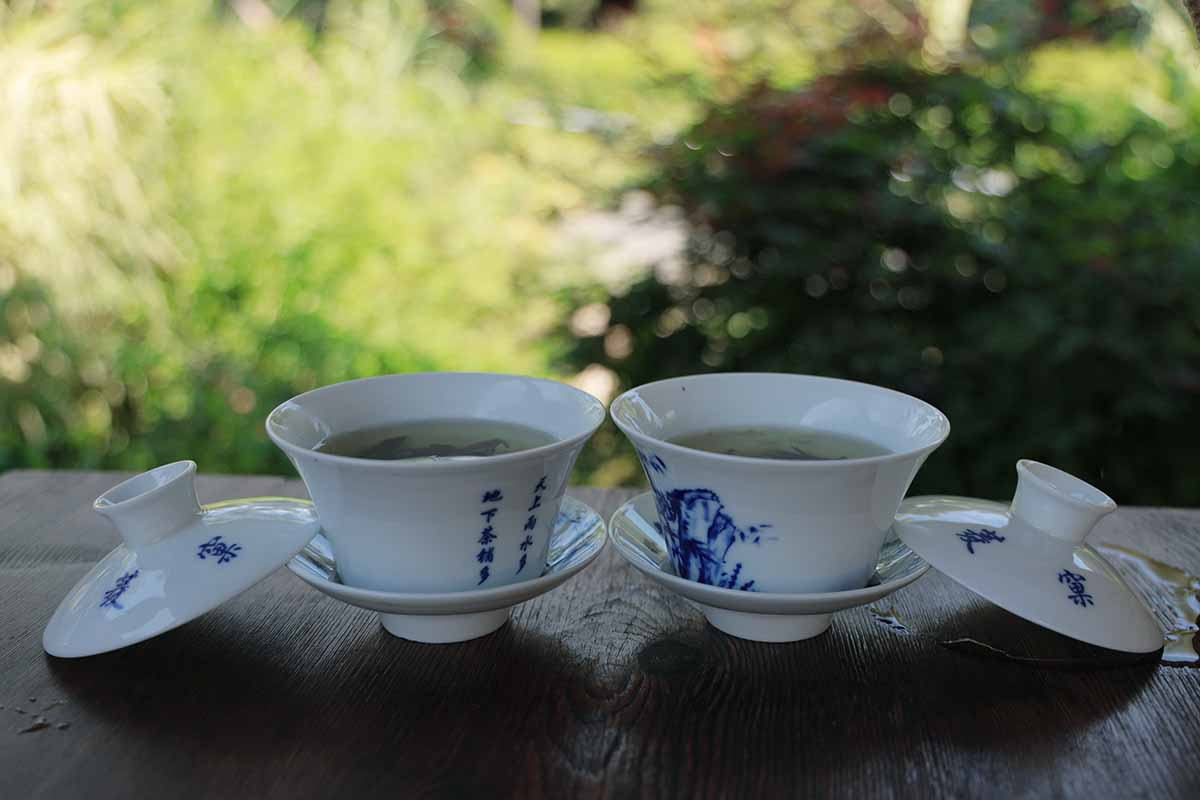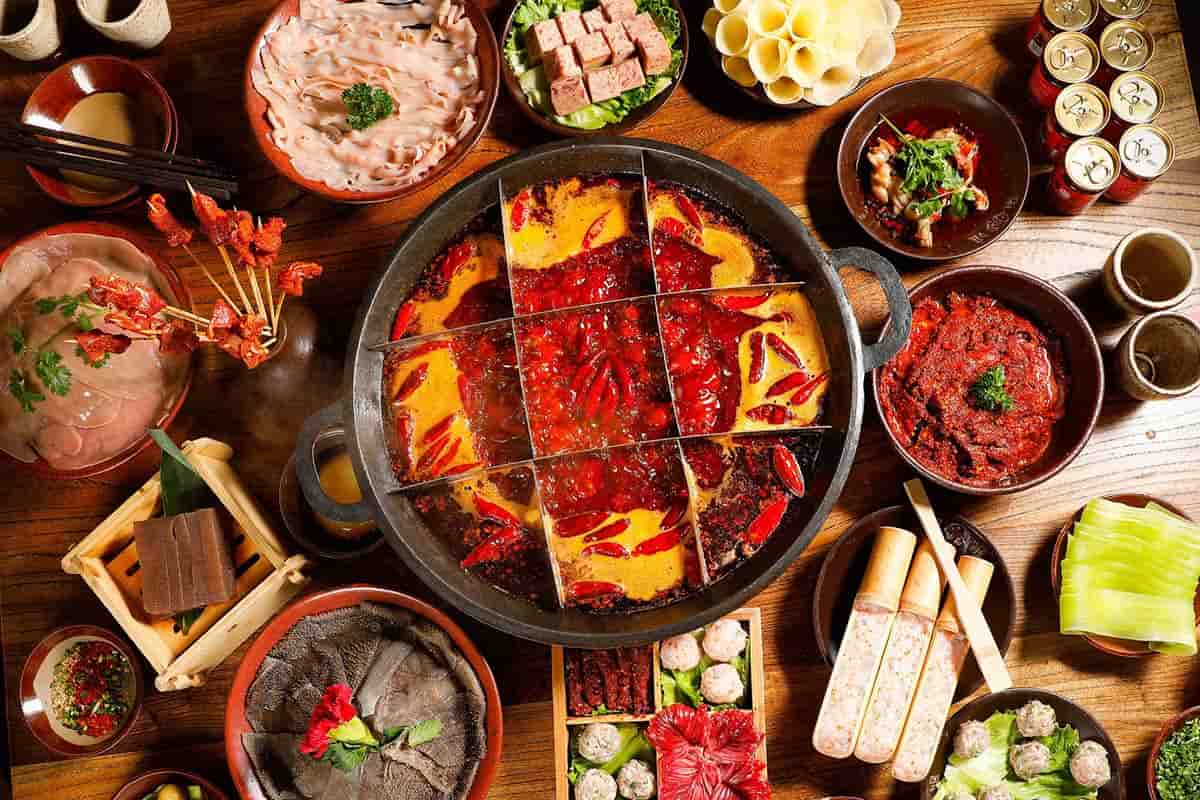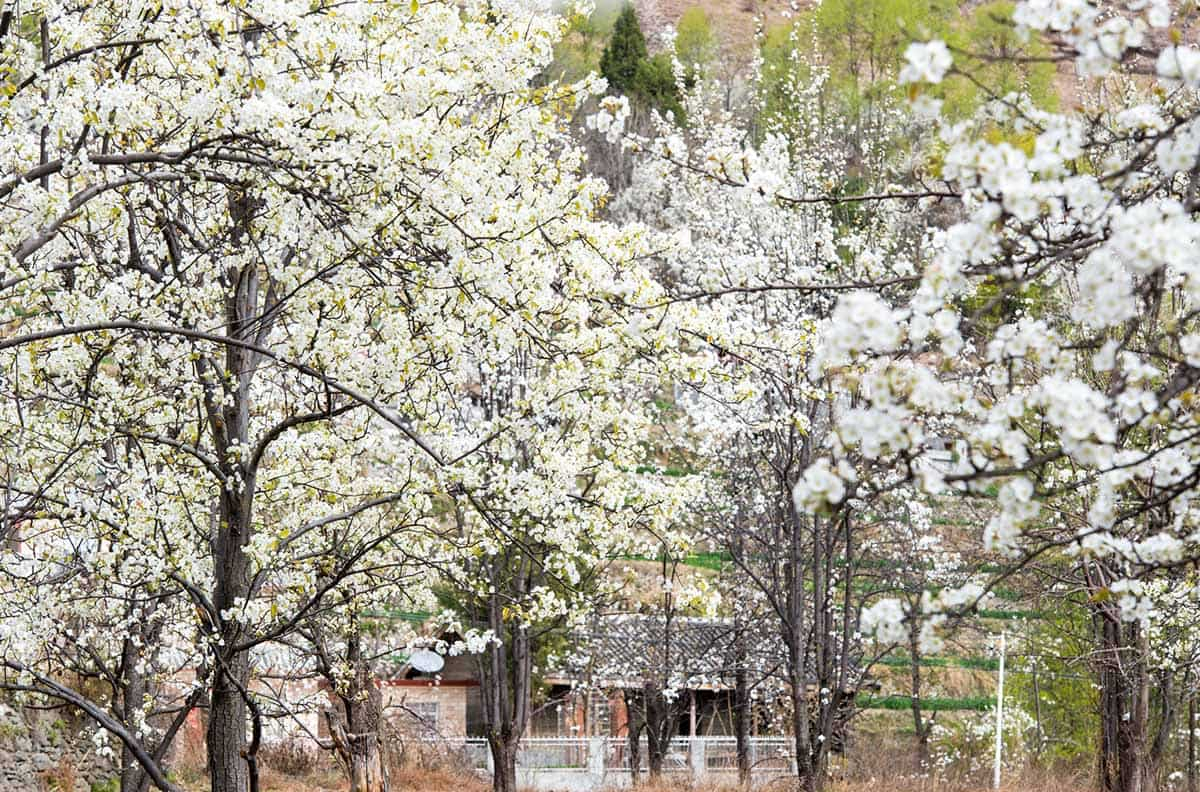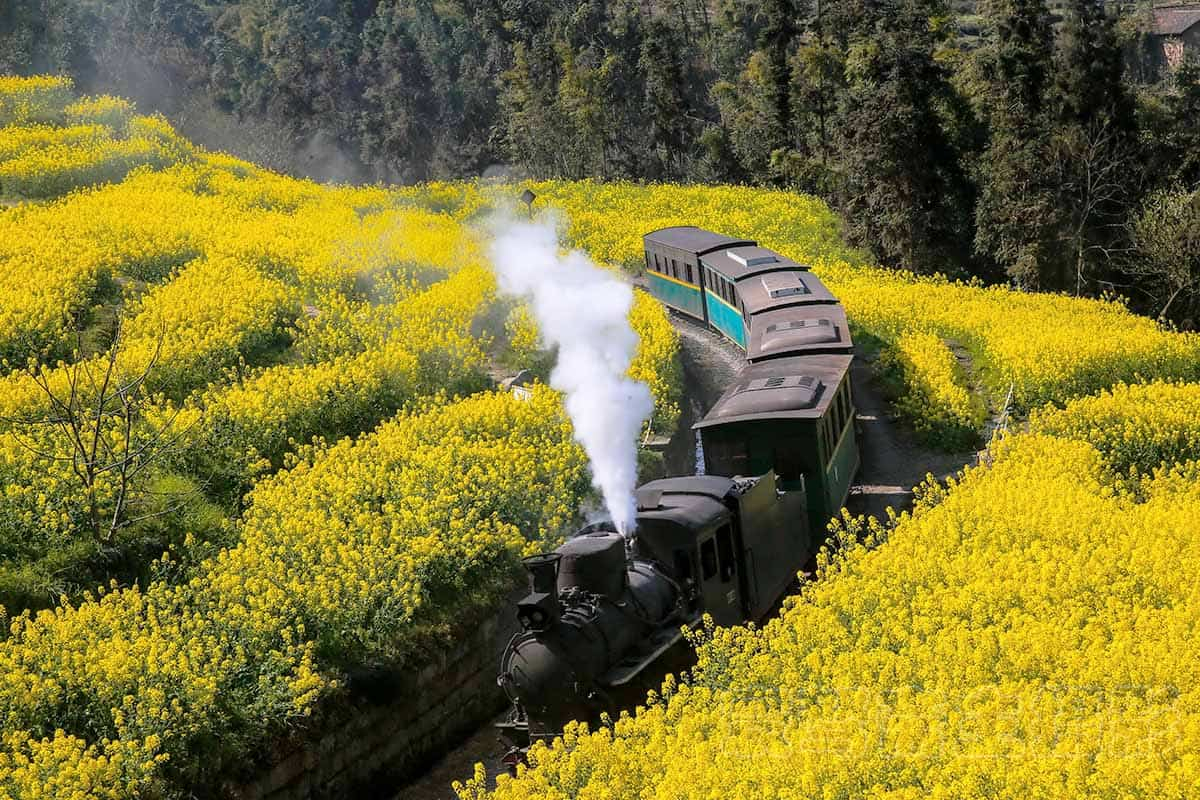Magical Sichuan Face Changing Show

Bian Lian is an ancient Chinese dramatic art that is part of the more general Sichuan opera. Performers wear brightly colored costumes and move to quick, dramatic music. They also wear vividly colored masks, typically depicting well known characters from the opera, which they change from one face to another almost instantaneously with the swipe of a fan, a movement of the head, or wave of the hand.
"Face changing" was firstly used for characters like gods and spirits as early as in the Ming Dynasty. "Changing into blue face" was already recorded in Erlang of Guankou Killed the Scaly Dragon, a compound opera of Ming Dynasty. At that time, the actor entered into the backstage to change the face. Later on, it evolved to that the actor changed his face on the stage. It became a stunt. Not a few local operas have it, but it is most famous in Sichuan Opera. Face changing art could be divided to "major" & "minor". In the major "face changing", the entire face was changed by three, five or even nine types. In minor face changing, only part of the face was changed.
Sichuan Opera features vivid, humorous narration, singing, and acrobatics.which is less constrained than that of the more popular Beijing opera form. It also boasts a system of stylized movements and its acting is both exquisite and lively. It's more like a play than other forms of Chinese opera, and the acting is highly polished. The music accompanying Sichuan opera utilizes a small gong and an instrument called a Muqin, which is similar to the Erhu.
The traditional formula is quite systematic with a combination of stunts like face-changing, tihuiyan, sword-hiding, fire-spitting and beard-changing with the plot and different charactersSichuan Opera performances are always full of wit, humor, lively dialogues, and pronounced local flavors.Most Sichuan Opera repertoires are adapted from the Chinese classical novels, mythologies, legends, and folk tales.
●Four ways of face-changing
Blowing Dust (Chinese: 吹脸)
The actor blows black dust hidden in their palm or close to his eyes, nose or mouth, so that it obscures their face.
Beard Manipulation (Chinese: 髯口功夫)
Beard colours can be changed while the beard is being manipulated, from black to grey and finally to white, expressing anger or excitement.
Pulling-down Masks (Chinese: 扯脸)
The actor can pull down a mask which has previously been hidden on top of their head, changing their face to red, green, blue or black to express happiness, hate, anger or sadness, respectively.
Face-dragging (Chinese: 抹脸)
The actor drags greasepaint hidden in their sideburns or eyebrows across their face to change their appearance.
●Some Topical performances during the Face Changing Show in Sichuan
Sichuan opera Music Gaoqiang(川剧高腔)
Sichuan Opera combines five different sonic systems, which are gaoqiang, huqin, dengdiao, tanxi, and kunqu. A single theater piece of Sichuan Opera usually combines two or three of the musical styles. Only very rarely do all five systems appear together. The gao qiang style is the most frequent and its structure is most clearly developed.
The best-known style with most distinct characteristics of southwestern China is called gaoqiang, which is distinguished by solos that are usually accompanied by sparse rhythmical accentuations played with wooden clappers. This highly ornamental vocal style is distinguished by brilliantly artful glissando links, skillfully implemented vibrato embellishments around a single tone in the form of a delicately elegant yet energetically melodic ornamentation. The simplicity of the folk songs' melodic structures is often retained.
Rolling lamp(滚灯)
The last segment of the opera, Rolling lamp, is a classic clown play. Audiences are often so impressed that they often hold their breathes when they see the performers doing complex physical comedy while successfully balancing a flaming bowl on their heads.
The whole performance involves two actors: the "husband" and the "wife", who argue over the husband's gambling. The wife keeps requiring the husband to do strange and dangerous stunts over the course of the argument. Throughout the routine, the husband struggles to do what his wife asked while keeping the flaming bowl on his head.
More often than not, the requirements of his stunts are so intense that his flexibility in performing the stunts will make the audience wonder whether he is made of rubber!
Water Sleeve dance(水袖舞)
Dance in China has a long recorded history. Some Chinese dances today, such as dancing with long sleeves, have been recorded at least as early as the Zhou dynasty (c. 1045–256 BCE). The art of dance in China reached a peak during the Tang dynasty (618–907 CE) but declined later.
Shuixiu can be translate literally to be water sleeves, which refers to a suit of skills to perform various movements with double white-silk sleeves attached to the cuffs of a costume. It is one of the most skillful stunts in Peking and its function is to exaggerate actors’ mood. Totally there are about hundreds of gesticulations in shuixiu, such as sleeves quivering, throwing, wigwagging, casting, raising, swinging, tossing, whisking, rolling, folding, crossing and so on.
Shadow play (皮影戏)
Shadow play, also known as shadow puppetry, is an ancient form of storytelling and entertainment which uses flat articulated cut-out figures (shadow puppets) which are held between a source of light and a translucent screen or scrim. The cut-out shapes of the puppets sometimes include translucent color or other types of detailing. Various effects can be achieved by moving both the puppets and the light source. A talented puppeteer can make the figures appear to walk, dance, fight, nod and laugh.
Spitting Fire (吐火)
Fire breathing (tuhuo) is an stunning art not only found in Sichuan or other parts of China. It's the act of making a plume or stream of fire by creating a precise mist of fuel from the mouth over an open flame.
Fire breathing show in Sichuan Opera is unique as compared to other such performances. Artists have combined Chinese mask changing with fire breathing, which is super difficult and dangerous to do.
Hand Shadow play(手影戏)
Hand shadow show is also known as Chinese shadows, for it originates in ancient China. The show is magical, yet its basics are simple and easy to learn. A light source, a blank background (wall, screen etc.) and your hands are all you need to play with shadows.
To deliver a knock-out performance with these seems unlikely. The hand shadow show in Sichuan Opera will never fall flat, however, for it is delivered by top notch artists in this field. Check out by watching a show!
Face Changing Show(川剧变脸)
Chinese mask changing is the highlight of Sichuan Opera. It is called "bianlian" in Chinese, which literally means "changing faces". It is an art performance that uses a technique of changing face masks amazingly fast.
Legend has it that people in Sichuan put on colorful masks to scare predators away in ancient times. Gradually, those masks became a tool of entertainment. They are designed to represent different emotions of characters on stage.
As much as 8 masks can be changed seamlessly in a row by top performers, all in the blink of an eye. Much of the intrigue lies in how performers are able to switch masks so rapidly and with such high accuracy.
Talented performers render it so flawlessly that it appears to be an illusion or magic trick. The art and fame of Chinese mask changing, or bianlian have spread overseas for its mysterious techniques and optical-illusion quality.
You Might Like
- HOTEST
- RECOMMEND

